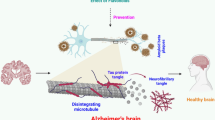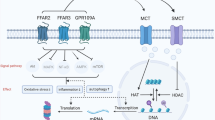Abstract
Ginseng is a popular herbal medicine and known to have protective and therapeutic effects in various diseases. Ginsenosides are active gradients representing the diverse pharmacological efficacy of ginseng. Huntington’s disease (HD) is incurable genetic disorder associated with mutant huntingtin (mHtt) aggregation in the central nervous system. This study was conducted to investigate the effects of ginsenoside Rg3 and Rf on mHtt aggregation, cell viability, mitochondrial function, and apoptotic molecules on HD model. To investigate the effect of ginsenosides on HD, neural stem cells were isolated from the R6/2 mouse brain and used as a cellular model of HD. Nuclear aggregation of mHtt was measured by immunocytochemistry, and expressions of mitochondrial biogenesis and apoptotic molecules were investigated by western blot. As a result, the number of mHtt aggregates positive cells has decreased by ginsenoside Rg3 and Rf treatment in cellular model of HD. Mitochondrial biogenesis-related molecules such as PGC-1α and phosphorylated CREB were increased or showed increased tendency by ginsenoside Rg3 and Rf. Apoptotic molecules, p53, Bax, and cleaved caspase-3, were down-regulated by treatment of ginsenoside Rg3 and Rf. In addition, Lysotracker staining result showed that cellular lysosomal content was reduced by ginsenoside Rg3 and Rf. Given that ginsenoside Rg3 and Rf have the potential to reduce mHtt aggregation and cellular apoptosis, these ginsenosides can be possible therapeutic candidates for treating HD phenotypes.





Similar content being viewed by others
References
Ahn S, Siddiqi MH, Aceituno VC, Simu SY, Yang DC (2016) Suppression of MAPKs/NF-kappaB activation induces intestinal anti-inflammatory action of ginsenoside Rf in HT-29 and RAW264.7 Cells. Immunol Invest 45:439–449
Andrew SE, Goldberg YP, Kremer B, Telenius H, Theilmann J, Adam S, Starr E, Squitieri F, Lin B, Kalchman MA et al (1993) The relationship between trinucleotide (CAG) repeat length and clinical features of Huntington’s disease. Nat Genet 4:398–403
Ang-Lee MK, Moss J, Yuan CS (2001) Herbal medicines and perioperative care. JAMA 286:208–216
Assinewe VA, Baum BR, Gagnon D, Arnason JT (2003) Phytochemistry of wild populations of Panax quinquefolius L. (North American ginseng). J Agric Food Chem 51:4549–4553
Attele AS, Wu JA, Yuan CS (1999) Ginseng pharmacology: multiple constituents and multiple actions. Biochem Pharmacol 58:1685–1693
Brewer GJ, Torricelli JR, Evege EK, Price PJ (1993) Optimized survival of hippocampal neurons in B27-supplemented Neurobasal, a new serum-free medium combination. J Neurosci Res 35:567–576
Bursch W (2001) The autophagosomal-lysosomal compartment in programmed cell death. Cell Death Differ 8:569–581
Chen G, Li H, Zhao Y, Zhu H, Cai E, Gao Y, Liu S, Yang H, Zhang L (2017) Saponins from stems and leaves of Panax ginseng prevent obesity via regulating thermogenesis, lipogenesis and lipolysis in high-fat diet-induced obese C57BL/6 mice. Food Chem Toxicol 106:393–403
Christensen LP (2009) Ginsenosides chemistry, biosynthesis, analysis, and potential health effects. Adv Food Nutr Res 55:1–99
Cui L, Jeong H, Borovecki F, Parkhurst CN, Tanese N, Krainc D (2006) Transcriptional repression of PGC-1alpha by mutant huntingtin leads to mitochondrial dysfunction and neurodegeneration. Cell 127:59–69
Du Y, Fu M, Wang YT, Dong Z (2018) Neuroprotective effects of ginsenoside Rf on amyloid-beta-induced neurotoxicity in vitro and in vivo. J Alzheimers Dis 64:309–322
Duyao M, Ambrose C, Myers R, Novelletto A, Persichetti F, Frontali M, Folstein S, Ross C, Franz M, Abbott M, Gray J, Conneally P, Young A, Penney J, Hollingsworth Z, Shoulson I, Lazzarini A, Falek A, Koroshetz W, Sax D, Bird E, Vonsattel J, Bonilla E, Alvir J, Bickham Conde J, Cha JH, Dure L, Gomez F, Ramos M, Sanchez-Ramos J, Snodgrass S, de Young M, Wexler N, Moscowitz C, Penchaszadeh G, MacFarlane H, Anderson M, Jenkins B, Srinidhi J, Barnes G, Gusella J, MacDonald M (1993) Trinucleotide repeat length instability and age of onset in Huntington’s disease. Nat Genet 4:387–392
Gu M, Gash MT, Mann VM, Javoy-Agid F, Cooper JM, Schapira AH (1996) Mitochondrial defect in Huntington’s disease caudate nucleus. Ann Neurol 39:385–389
Guicciardi ME, Leist M, Gores GJ (2004) Lysosomes in cell death. Oncogene 23:2881–2890
In G, Ahn NG, Bae BS, Lee MW, Park HW, Jang KH, Cho BG, Han CK, Park CK, Kwak YS (2017) In situ analysis of chemical components induced by steaming between fresh ginseng, steamed ginseng, and red ginseng. J Ginseng Res 41:361–369
Jang M, Lee MJ, Kim CS, Cho IH (2013) Korean red ginseng extract attenuates 3-nitropropionic acid-induced Huntington’s-like symptoms. Evid Based Complement Alternat Med 2013:237207
Kang S, Min H (2012) Ginseng, the ‘immunity boost’: the effects of Panax ginseng on immune system. J Ginseng Res 36:354–368
Kim JH (2012) Cardiovascular diseases and Panax ginseng: a review on molecular mechanisms and medical applications. J Ginseng Res 36:16–26
Kim EJ, Jung IH, Van Le TK, Jeong JJ, Kim NJ, Kim DH (2013) Ginsenosides Rg5 and Rh3 protect scopolamine-induced memory deficits in mice. J Ethnopharmacol 146:294–299
Kim H, Park CW, Cho SH (2018) The beneficial effect of Korean red ginseng extract on atopic dermatitis patients: an 8 weeks open, noncomparative clinical study. Ann Dermatol 30:304–308
Kim KS, Jung Yang H, Lee IS, Kim KH, Park J, Jeong HS, Kim Y, Seok Ahn K, Na YC, Jang HJ (2015) The aglycone of ginsenoside Rg3 enables glucagon-like peptide-1 secretion in enteroendocrine cells and alleviates hyperglycemia in type 2 diabetic mice. Sci Rep 5:18325
Landles C, Bates GP (2004) Huntingtin and the molecular pathogenesis of Huntington's disease. Fourth in molecular medicine review series. EMBO Rep 5:958–963
Lee H, Gonzalez FJ, Yoon M (2006) Ginsenoside Rf, a component of ginseng, regulates lipoprotein metabolism through peroxisome proliferator-activated receptor alpha. Biochem Biophys Res Commun 339:196–203
Lee KG, Son SW (2011) Efficacy of Korean red ginseng in the treatment of atopic dermatitis. J Ginseng Res 35:149–154
Lee KH, Bae IY, Park SI, Park JD, Lee HG (2016a) Antihypertensive effect of Korean red ginseng by enrichment of ginsenoside Rg3 and arginine-fructose. J Ginseng Res 40:237–244
Lee M, Liu T, Im W, Kim M (2016b) Exosomes from adipose-derived stem cells ameliorate phenotype of Huntington’s disease in vitro model. Eur J Neurosci 44:2114–2119
Lee S, Rhee DK (2017) Effects of ginseng on stress-related depression, anxiety, and the hypothalamic-pituitary-adrenal axis. J Ginseng Res 41:589–594
Lee SM, Bae BS, Park HW, Ahn NG, Cho BG, Cho YL, Kwak YS (2015) Characterization of Korean Red Ginseng (Panax ginseng Meyer): history, preparation method, and chemical composition. J Ginseng Res 39:384–391
Lee ST, Chu K, Sim JY, Heo JH, Kim M (2008) Panax ginseng enhances cognitive performance in Alzheimer disease. Alzheimer Dis Assoc Disord 22:222–226
Leone TC, Lehman JJ, Finck BN, Schaeffer PJ, Wende AR, Boudina S, Courtois M, Wozniak DF, Sambandam N, Bernal-Mizrachi C, Chen Z, Holloszy JO, Medeiros DM, Schmidt RE, Saffitz JE, Abel ED, Semenkovich CF, Kelly DP (2005) PGC-1alpha deficiency causes multi-system energy metabolic derangements: muscle dysfunction, abnormal weight control and hepatic steatosis. PLoS Biol 3:e101
Li W, Gu C, Zhang H, Awang DV, Fitzloff JF, Fong HH, van Breemen RB (2000) Use of high-performance liquid chromatography-tandem mass spectrometry to distinguish Panax ginseng C. A. Meyer (Asian ginseng) and Panax quinquefolius L. (North American ginseng). Anal Chem 72:5417–5422
Lim W, Mudge KW, Vermeylen F (2005) Effects of population, age, and cultivation methods on ginsenoside content of wild American ginseng (Panax quinquefolium). J Agric Food Chem 53:8498–8505
Lin J, Wu PH, Tarr PT, Lindenberg KS, St-Pierre J, Zhang CY, Mootha VK, Jager S, Vianna CR, Reznick RM, Cui L, Manieri M, Donovan MX, Wu Z, Cooper MP, Fan MC, Rohas LM, Zavacki AM, Cinti S, Shulman GI, Lowell BB, Krainc D, Spiegelman BM (2004) Defects in adaptive energy metabolism with CNS-linked hyperactivity in PGC-1alpha null mice. Cell 119:121–135
Lu JM, Yao Q, Chen C (2009) Ginseng compounds: an update on their molecular mechanisms and medical applications. Curr Vasc Pharmacol 7:293–302
Mangiarini L, Sathasivam K, Seller M, Cozens B, Harper A, Hetherington C, Lawton M, Trottier Y, Lehrach H, Davies SW, Bates GP (1996) Exon 1 of the HD gene with an expanded CAG repeat is sufficient to cause a progressive neurological phenotype in transgenic mice. Cell 87:493–506
McGill JK, Beal MF (2006) PGC-1alpha, a new therapeutic target in Huntington's disease? Cell 127:465–468
Milakovic T, Johnson GV (2005) Mitochondrial respiration and ATP production are significantly impaired in striatal cells expressing mutant huntingtin. J Biol Chem 280:30773–30782
Nekrasov ED, Vigont VA, Klyushnikov SA, Lebedeva OS, Vassina EM, Bogomazova AN, Chestkov IV, Semashko TA, Kiseleva E, Suldina LA, Bobrovsky PA, Zimina OA, Ryazantseva MA, Skopin AY, Illarioshkin SN, Kaznacheyeva EV, Lagarkova MA, Kiselev SL (2016) Manifestation of Huntington’s disease pathology in human induced pluripotent stem cell-derived neurons. Mol Neurodegener 11:27
Panov AV, Gutekunst CA, Leavitt BR, Hayden MR, Burke JR, Strittmatter WJ, Greenamyre JT (2002) Early mitochondrial calcium defects in Huntington's disease are a direct effect of polyglutamines. Nat Neurosci 5:731–736
Qi LW, Wang CZ, Yuan CS (2011) Ginsenosides from American ginseng: chemical and pharmacological diversity. Phytochemistry 72:689–699
Repnik U, Turk B (2010) Lysosomal-mitochondrial cross-talk during cell death. Mitochondrion 10:662–669
Sawa A, Wiegand GW, Cooper J, Margolis RL, Sharp AH, Lawler JF Jr, Greenamyre JT, Snyder SH, Ross CA (1999) Increased apoptosis of Huntington disease lymphoblasts associated with repeat length-dependent mitochondrial depolarization. Nat Med 5:1194–1198
Schlag EM, McIntosh MS (2006) Ginsenoside content and variation among and within American ginseng (Panax quinquefolius L.) populations. Phytochemistry 67:1510–1519
Settembre C, Fraldi A, Medina DL, Ballabio A (2013) Signals from the lysosome: a control centre for cellular clearance and energy metabolism. Nat Rev Mol Cell Biol 14:283–296
Shin SS, Yoon M (2018) Korean red ginseng (Panax ginseng) inhibits obesity and improves lipid metabolism in high fat diet-fed castrated mice. J Ethnopharmacol 210:80–87
St-Pierre J, Drori S, Uldry M, Silvaggi JM, Rhee J, Jager S, Handschin C, Zheng K, Lin J, Yang W, Simon DK, Bachoo R, Spiegelman BM (2006) Suppression of reactive oxygen species and neurodegeneration by the PGC-1 transcriptional coactivators. Cell 127:397–408
Sugars KL, Rubinsztein DC (2003) Transcriptional abnormalities in Huntington disease. Trends Genet 19:233–238
Tsunemi T, Ashe TD, Morrison BE, Soriano KR, Au J, Roque RA, Lazarowski ER, Damian VA, Masliah E, La Spada AR (2012) PGC-1alpha rescues Huntington’s disease proteotoxicity by preventing oxidative stress and promoting TFEB function. Sci Transl Med 4:142ra197
Van Kampen J, Robertson H, Hagg T, Drobitch R (2003) Neuroprotective actions of the ginseng extract G115 in two rodent models of Parkinson’s disease. Exp Neurol 184:521–529
Walton MR, Dragunow I (2000) Is CREB a key to neuronal survival? Trends Neurosci 23:48–53
Weydt P, Pineda VV, Torrence AE, Libby RT, Satterfield TF, Lazarowski ER, Gilbert ML, Morton GJ, Bammler TK, Strand AD, Cui L, Beyer RP, Easley CN, Smith AC, Krainc D, Luquet S, Sweet IR, Schwartz MW, La Spada AR (2006) Thermoregulatory and metabolic defects in Huntington's disease transgenic mice implicate PGC-1alpha in Huntington's disease neurodegeneration. Cell Metab 4:349–362
Wu J, Jeong HK, Bulin SE, Kwon SW, Park JH, Bezprozvanny I (2009) Ginsenosides protect striatal neurons in a cellular model of Huntington's disease. J Neurosci Res 87:1904–1912
Xu XF, Gao Y, Xu SY, Liu H, Xue X, Zhang Y, Zhang H, Liu MN, Xiong H, Lin RC, Li XR (2018) Remarkable impact of steam temperature on ginsenosides transformation from fresh ginseng to red ginseng. J Ginseng Res 42:277–287
Zhang Y, Liu QZ, Xing SP, Zhang JL (2016) Inhibiting effect of Endostar combined with ginsenoside Rg3 on breast cancer tumor growth in tumor-bearing mice. Asian Pac J Trop Med 9:180–183
Funding
This work was supported by the Brain Research Program through the National Research Foundation of Korea (NRF) funded by the Ministry of Science, ICT & Future Planning (2016M3C7A1914002), SNUH research fund (26-2017-0030), and by a grant from the Korean Society of Ginseng funded by the Korea Ginseng Corporation (2015).
Author information
Authors and Affiliations
Corresponding authors
Additional information
Editor: Tetsuji Okamoto
Rights and permissions
About this article
Cite this article
Lee, M., Ban, JJ., Won, B.H. et al. Therapeutic potential of ginsenoside Rg3 and Rf for Huntington’s disease. In Vitro Cell.Dev.Biol.-Animal 57, 641–648 (2021). https://doi.org/10.1007/s11626-021-00595-1
Received:
Accepted:
Published:
Issue Date:
DOI: https://doi.org/10.1007/s11626-021-00595-1




